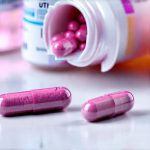Urinary tract infections (UTIs) are incredibly common, affecting millions annually, and their aftermath – the period of recovery – is often overlooked. While antibiotics effectively eliminate the infecting bacteria, they don’t necessarily restore the delicate balance within the urinary system or address potential lingering discomfort. Many individuals experience ongoing symptoms like burning sensations, frequency, urgency, and even bladder spasms long after completing a course of antibiotics. This article will delve into supportive medications and strategies that can aid in urinary tract recovery, focusing on promoting healing, reducing inflammation, and preventing recurrence. It’s crucial to remember this information is for general knowledge and doesn’t substitute professional medical advice; always consult your healthcare provider for personalized treatment plans.
The recovery phase isn’t simply about symptom disappearance; it’s about rebuilding a healthy urinary environment. Antibiotics can sometimes disrupt the natural gut microbiome, which indirectly impacts overall immune function and bladder health. Additionally, inflammation caused by infection can leave lasting effects on the bladder lining, contributing to ongoing discomfort. Supportive medications aim to address these aspects alongside antibiotic treatment or even after completion, offering a holistic approach to recovery. Understanding that each individual responds differently is paramount; what works for one person may not work for another, underscoring the need for personalized care and open communication with your doctor.
Addressing Inflammation & Discomfort
Inflammation plays a significant role in post-UTI discomfort. Even after bacteria are eradicated, the bladder lining can remain irritated and sensitive, leading to persistent symptoms. Several medications aim to alleviate this inflammation and provide symptomatic relief. Phenazopyridine, often sold under brand names like Azo Urinary Pain Relief, is a common over-the-counter option specifically designed to numb the urinary tract, reducing pain and burning sensations. However, it’s important to note that phenazopyridine only treats symptoms; it doesn’t address the underlying cause of discomfort and can mask other potential issues. It also causes urine to turn orange/red, which is normal but can be alarming if unexpected.
Beyond symptomatic relief, some medications directly target inflammation within the urinary tract. Antispasmodics, like oxybutynin or tolterodine, are often prescribed to reduce bladder spasms and urgency. These medications work by relaxing the muscles of the bladder, decreasing involuntary contractions that can cause discomfort. While effective, antispasmodics can have side effects such as dry mouth and constipation, so discussing these with your doctor is essential. Additionally, some healthcare providers may recommend low-dose nonsteroidal anti-inflammatory drugs (NSAIDs) like ibuprofen to manage inflammation, though their use should be carefully considered due to potential kidney effects, particularly in individuals with pre-existing kidney conditions.
It’s vital to remember that medication alone isn’t always the answer. Lifestyle modifications such as staying well-hydrated and avoiding bladder irritants (caffeine, alcohol, spicy foods) can significantly complement medical treatment and promote faster recovery. A holistic approach combining appropriate medications with supportive lifestyle changes is often the most effective strategy for managing post-UTI discomfort and inflammation.
Promoting Urinary Tract Healing
Beyond addressing immediate symptoms, some medications aim to support the overall health and healing of the urinary tract lining. Hyaluronic acid (HA), a naturally occurring substance found in connective tissues, has gained attention as a potential therapeutic agent for interstitial cystitis/bladder pain syndrome – conditions often exacerbated by post-UTI inflammation. HA is believed to help restore the protective glycosaminoglycan layer of the bladder wall, which can be damaged during infection and inflammation. It’s typically administered intravesically (directly into the bladder) via catheterization, requiring a healthcare professional’s guidance.
Another area of research focuses on restoring the beneficial bacteria within the urinary microbiome. While not a traditional medication, D-mannose, a naturally occurring sugar found in fruits, is often used as a preventative measure and may play a role in recovery. It works by preventing E. coli (the most common UTI causing bacterium) from adhering to the bladder wall, reducing its ability to colonize and cause infection. D-mannose isn’t an antibiotic and doesn’t kill existing bacteria, but it can support a healthier urinary environment, potentially decreasing recurrence. Probiotics, specifically strains shown to benefit vaginal health (as vaginal flora impacts urinary health), are also being explored as potential adjunct therapies, though more research is needed to determine their effectiveness in post-UTI recovery.
The concept of “healing” the urinary tract isn’t about a quick fix; it’s about creating an environment conducive to long-term health and resilience. This often involves addressing underlying factors that may contribute to susceptibility or recurrence, such as hormonal imbalances or immune deficiencies, in addition to supportive medications and lifestyle adjustments.
Understanding Bladder Pain Syndromes & Interstitial Cystitis
Sometimes, post-UTI symptoms don’t fully resolve and transition into chronic bladder pain syndromes like Interstitial Cystitis (IC). IC is a complex condition characterized by persistent bladder pressure, bladder pain, and urinary frequency/urgency – even without evidence of infection. There’s no single cure for IC, but several medications can help manage the symptoms. Pentosan polysulfate sodium (Elmiron) has been used to treat IC for years, though it carries potential risks and is now often reserved for specific cases after careful evaluation.
Other approaches focus on managing pain and inflammation associated with IC. Low-dose tricyclic antidepressants, like amitriptyline, can help reduce bladder pain by modulating nerve signals. Neuromodulation therapies, such as sacral neuromodulation (SNS), involve implanting a small device to stimulate nerves controlling the bladder and pelvic floor muscles, offering relief for some patients. It’s crucial to differentiate between lingering post-UTI symptoms and IC, as treatment approaches differ significantly. A thorough evaluation by a urologist is essential for accurate diagnosis and personalized management.
The Role of Vitamins & Supplements
While not replacements for prescribed medications, certain vitamins and supplements may offer supportive benefits during urinary tract recovery. Vitamin C, known for its immune-boosting properties, can help strengthen the body’s defense mechanisms against infection. However, high doses can sometimes irritate the bladder, so moderation is key. Zinc also plays a role in immune function and wound healing, potentially aiding in the repair of damaged bladder tissue.
Some individuals find relief with supplements like quercetin, an antioxidant found in many plants that possesses anti-inflammatory properties. It may help reduce inflammation within the urinary tract and alleviate discomfort. Always discuss any new supplement regimen with your doctor, as some can interact with medications or have unintended side effects. It’s important to remember that supplements are not regulated like pharmaceuticals, and quality can vary significantly between brands.
Preventing Recurrence: Proactive Steps
Preventing recurrent UTIs is a critical part of long-term urinary tract health. Low-dose antibiotic prophylaxis (taking a small, regular dose of antibiotics) may be prescribed for individuals experiencing frequent infections. However, the overuse of antibiotics can contribute to antibiotic resistance, so this approach should be carefully considered with your doctor. Non-antibiotic preventative measures are often preferred.
These include:
1. Staying well-hydrated (drinking at least 6-8 glasses of water daily).
2. Practicing good hygiene habits (wiping from front to back after using the toilet).
3. Urinating after sexual activity.
4. Avoiding irritating substances like caffeine, alcohol, and spicy foods.
5. Considering D-mannose supplementation as a preventative measure.
Ultimately, proactive steps aimed at strengthening the immune system and maintaining a healthy urinary environment are essential for preventing recurrence and ensuring long-term urinary tract health. A collaborative approach with your healthcare provider is key to developing a personalized prevention plan tailored to your individual needs and risk factors.





















